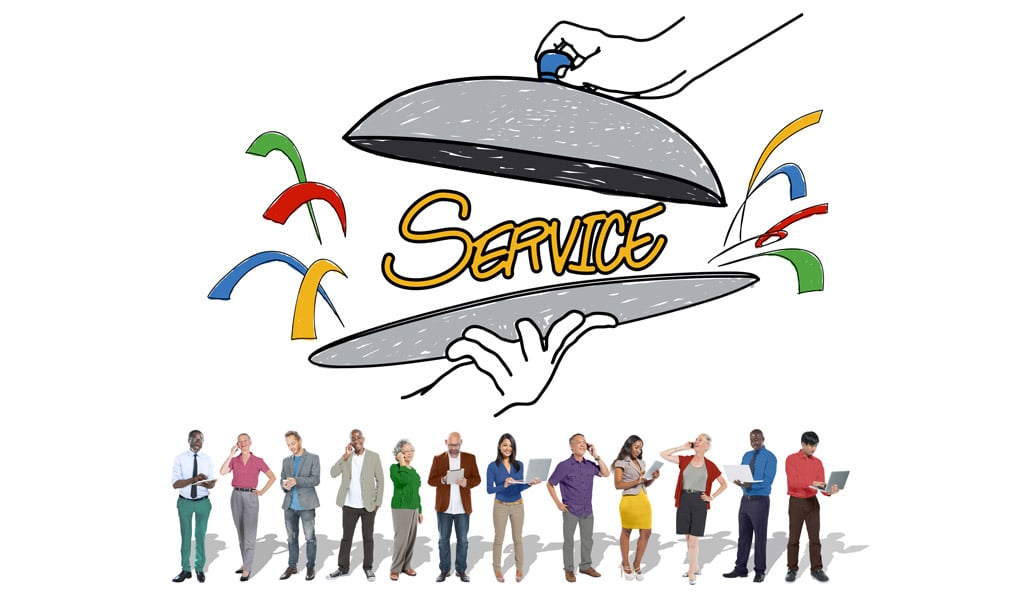
Ever feel like there’s a new business model to learn with each week that goes by? Well, don’t worry, that’s why we’re here. In the digital age, customer experience and excellent customer service is a top priority for most businesses. And if it isn’t, it should be. But how do you measure the quality of service? And why should you? How do you narrow the gap between what you think of your business and what customers really think of your business? That’s what we’re going to be looking at today in our SERVQUAL guide. Let’s get started.
What is the SERVQUAL Model?
Put simply, the SERVQUAL model has been devised to identify the gap in perception between what the company believes it is delivering to customers and the perception in the mind of the customer. Business leaders often forget that they already know everything about a company. They know the ins and outs of what they can offer to the customer. The problem here lies in the word “can”. Just because you can deliver something, doesn’t mean you are. Just because your product will solve a customer’s needs, doesn’t mean they know that. And even if they do know this, they might not like something else about the service you offer. What it all comes down to is quality and measuring the quality of your service in different areas.
There are five dimensions in the SERVQUAL model, and by understanding these dimensions, you can begin to hack your business to better meet your customer’s needs. We’ll get onto the dimensions in the next section.
The SERVQUAL model was originally devised by market researchers to drive higher customer satisfaction in the retail and service industries. However, the reality is, no matter what industry you’re in, you have some form of customer service. When you deal with customers, you have to understand how their mind works. You have to understand what drives their decisions and actions. This all comes down to perception.
The SERVQUAL model was developed back in the 1980s but has been continually researched by marketers to make it effective for businesses in any time period. Today, we have a much more digital economy, but this doesn’t change the effectiveness of the SERVQUAL model. Customer perceptions are as relevant today as they were in the past. In fact, they could be even more relevant today because of how connected the world is. Customers can share their perceptions openly and to a huge platform that spans the entire world – something that wasn’t possible in the 1980s.
You may also see SERVQUAL called the RATER model RATER is an acronym of the 5 dimensions we are delving into in the next section. You can use either name to refer to this model, but SERVQUAL is the more well-known and popular name for it.

The 5 Dimensions of Service Quality
There are five mentions that customers use to evaluate the quality of service that they receive.
Reliability
The first dimension of service quality is reliability. This refers to the organization’s ability to perform the service accurately. It also involves the ability of the company to complete the service on time, consistently, and error-free every time.
Responsiveness
The second dimension of service quality responsiveness. Much like the title suggests, this looks at the organization’s ability to respond to the customer’s needs promptly. When companies fail to respond to a customer, and particularly when there is no obvious reason or explanation, creates a negative perception in the minds of the customers.
Assurance
This time dimension relies on the employee’s ability to establish trust and confidence with the customer. This is based on the employee’s knowledge and ability to establish friendly and polite communication. This dimension is characterized by four components: competence, respect for the customer, effective communication, and attitude.
Empathy
The fourth dimension of service quality is empathy. This is established by the employee’s ability to show care and genuine concern for customers. Empathy must be continually displayed by the employee for it to be effective. To establish whether someone is displaying the right amount of empathy, you can ask the following questions:
- Are they approachable?
- Do they seem sensitive to the customer’s needs, concerns, and life circumstances?
- Are they actively listening to the customer?
- Are they trying to understand the customer’s needs by asking the right questions?
Tangibles
The fifth and final dimension is called tangibles. This can be things like the aesthetic of the company (the look and feel of the website, the logo, and so on). Is the company aesthetic visually appealing to the customer? Tangibles can also refer to other areas of aesthetic such as:
Physical facilities
If you have a brick and mortar store, does it look inviting? Do customers feel compelled to walk in? Is your stock nicely spaced out and presented in a logical way? Is your store clean? Do you offer toilet facilities for your customers?
Being clean and presentable is crucial, but you also need to ensure that your facilities match your business. If you sell baby clothing, then you might want to offer a baby changing room for your customers. You are encouraging parents with babies to come into your store, and babies need to be changed often. Failing to accommodate your customers in this way can lead to the perception that you don’t truly understand what it’s like to be a parent out shopping.
Equipment
This is about how high quality and fit for purpose your equipment is. Your core equipment must work effectively, but ideally, all equipment that the customer will use should work well too. For example, if your business prints photos from phones, then your printing equipment must be of high quality. But what about your automatic doors? What about your automatic hand sanitizer dispenser?
The Appearance of Personnel
How well presented are your employees? This doesn’t mean you need to hire supermodels or highly attractive employees, but that there should be a standard for dress code and grooming. Different companies will have different rules for this depending on the company culture and the kind of customers they want to attract. However, here are some best practice guidelines:
- Employees shouldn’t wear clothing with offensive slogans.
- Clothing should be clean and unwrinkled.
- Employees should practice good personal hygiene and grooming.
- No clothing that is associated with exercise or leisure activity (unless you run an athletic wear store, of course).
It’s important to note that your goal should be to encourage these guidelines without being overly nitpicky. Attitudes have shifted considerably over the last few decades, so be wary of following old-fashioned advice that will cause tensions between you and your employees. For example, in the past, many companies banned visible tattoos. They would make employees with arm tattoos wear long-sleeved tops or wear tattoo makeup. This is widely considered unreasonable and unnecessary in 2020. While having a dress code can be a good thing, just remember that you hired your employees because of their professional skills. If you make them feel targeted for having a tattoo, or unnatural hair color, you’re sending the message that you don’t see them as a person, but as a skill dispenser. Employees who feel undervalued don’t work as effectively as those who feel valued.

5 More Dimensions
Okay, so we said there are 5 dimensions, but some models actually use 10. The model has developed over time and some businesses find it useful to add more dimensions to their customer satisfaction research. These additional dimensions are: Access, courtesy, Communication, Credibility, Security, Knowing the customer. Many of these categories can actually fit into the previous 5 dimensions, but it can be useful to create more distinct categories to ensure that your questions address all areas of quality.
The Questions
Okay, so now you know the dimensions, but how do you determine how well you are performing in each area. The SERVQUAL model is qualitative in nature, so the results are subjective to the businesses who interpret them. This is why many businesses develop their own questionnaire to see how effective they are in each of these dimensions.
The original SERVQUAL questionnaire was made up of 22 questions and split into two sections. In the first section, respondents were asked about their expectations of the ideal service firm in that industry. In the second question, respondents were asked specific questions about particular companies within that industry. The purpose of splitting these questions into sections is that it helps identify the gaps in perception between customers and companies.
Of course, businesses are using this model to drive action for their own business. They are not conducting an industry-wide research study, and that’s why many businesses create more tailored surveys that specifically address the core features of their business or industry.
For an example of some questions you might ask, consider the following:
You run a hotel. You might include the following questions on a scale of -2 (negative) to +2 (positive). In this scenario, 0 would be neutral.
Having stayed at this hotel, I feel that the physical facilities are:
- -2 Much less than I expected.
- -1 Less than I expected
- 0 Just as I expected
- +1 More than I expected
- +2 Much more than I expected.
You can then use similar questions to address each of the 5 (or 10) dimensions.
Gap Analysis
There are also considered to be 5 gaps in perception in the SERVQUAL model.
Knowledge Gap
The organization’s knowledge of customer expectations is lacking. For example, if you expected most of your customers to say that they thought the physical facilities at your hotel were much more than they expected, but actually most people said they were much less than they expected, then you have a knowledge gap.
Standards Gap
The organization has an incomplete or inaccurate perception of the standards their customer expects. When this happens, the company might start to implement policies or make decisions that go against customer standards. They also risk-taking unnecessary actions that cost money and time but deliver little (or no) benefit.
Delivery Gap
The service is different from what the customer expects. This can be due to misleading (intentional or not) marketing. It can also be due to the employees delivering the service in the wrong way.
Communications Gap
This is when a company has over-promised in a way that creates a false perception of the company or product. It can also be due to an employee’s not understanding the policy well enough to communicate it effectively to customers. If customers continually misunderstand something about your product, then you have a communications gap.
Satisfaction Gap
This is when there is a significant difference between the service a customer expects and the service they actually receive. A satisfaction gap can be very harmful to a company’s reputation.